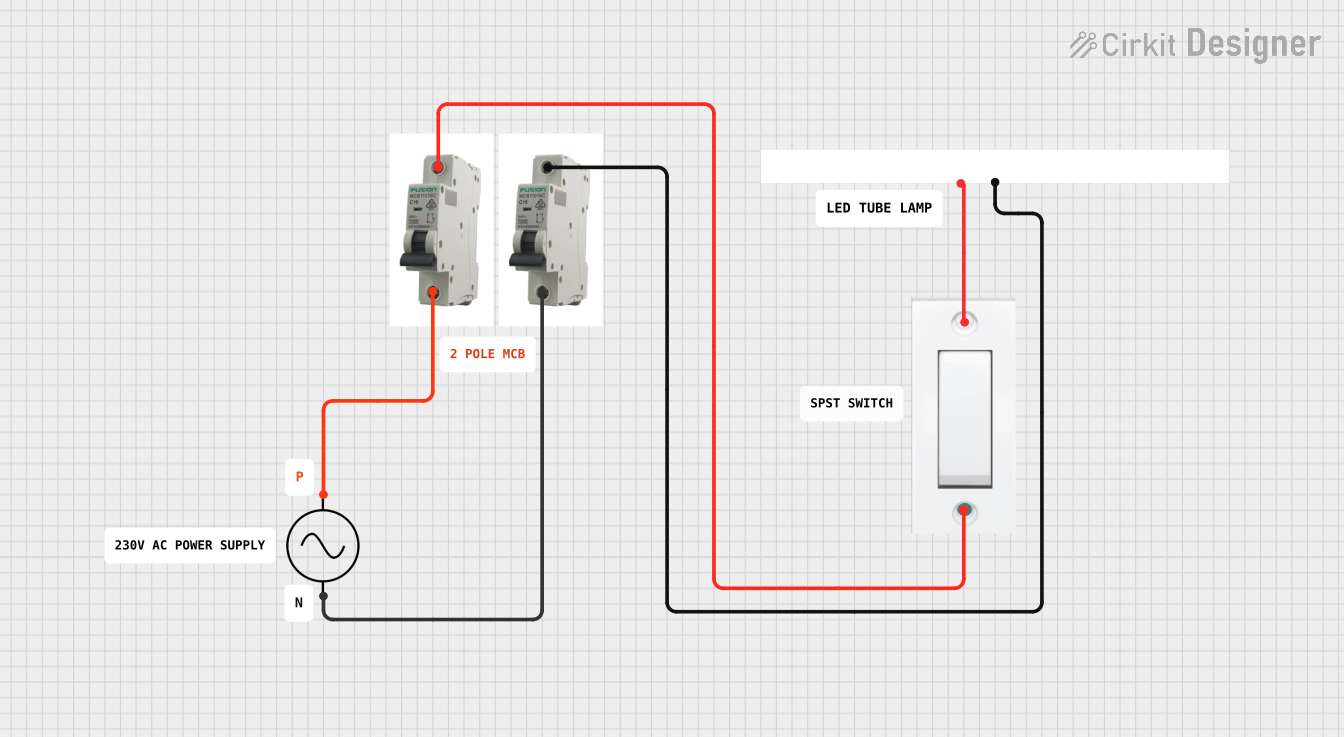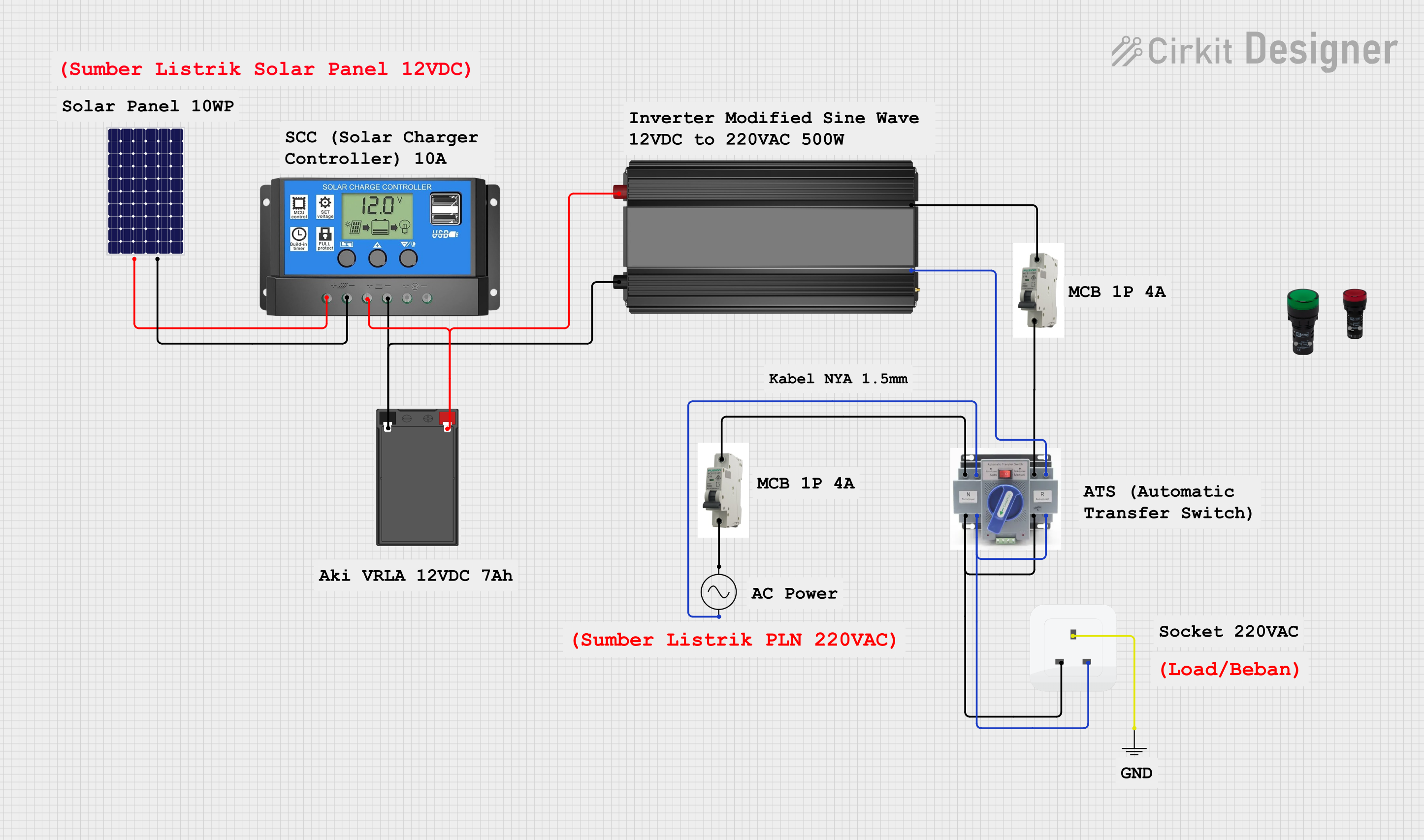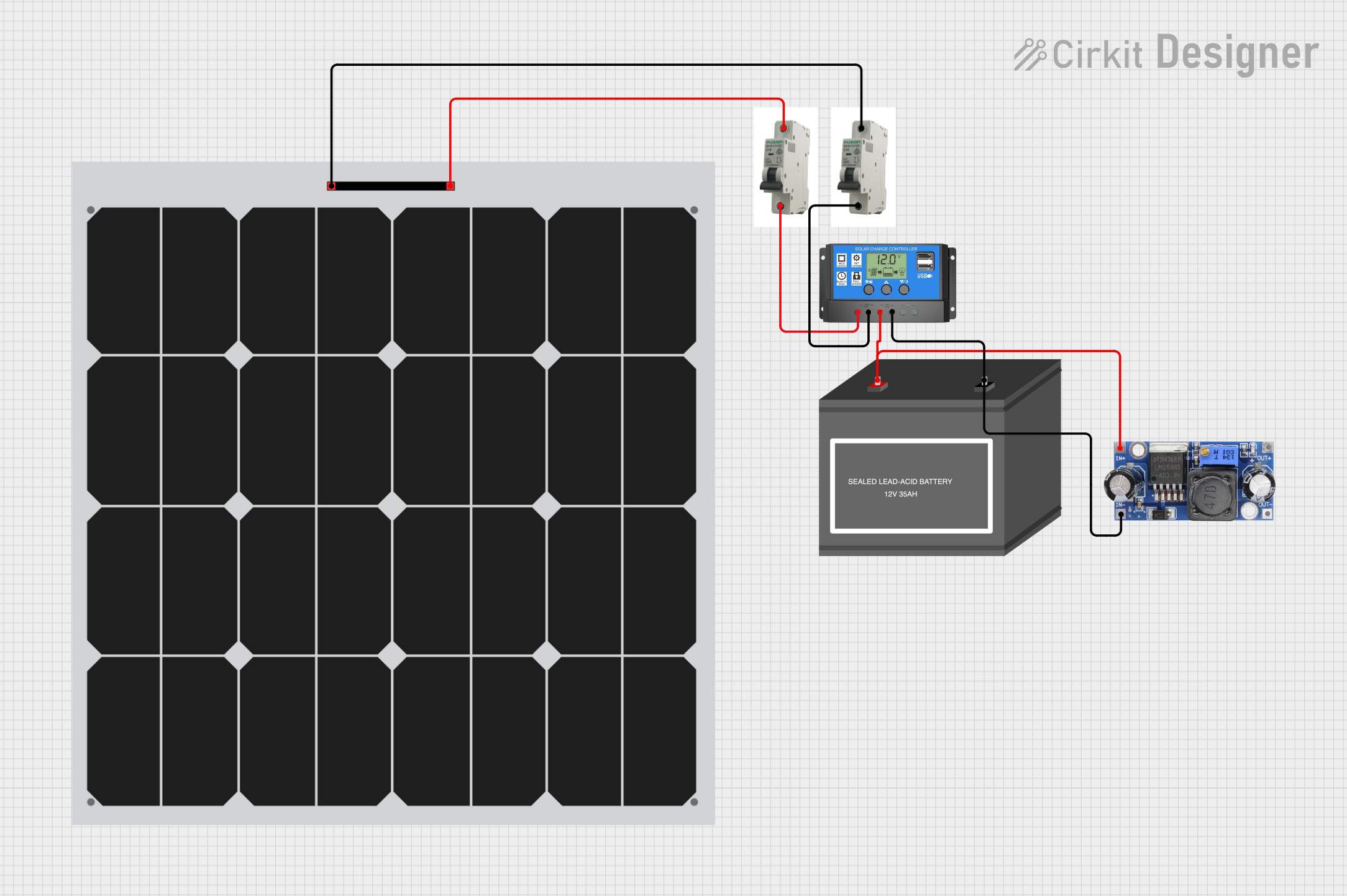
How to Use MCB 1 Phase: Examples, Pinouts, and Specs

 Design with MCB 1 Phase in Cirkit Designer
Design with MCB 1 Phase in Cirkit DesignerIntroduction
The MCB 1 Phase (Miniature Circuit Breaker) is an essential safety device designed for single-phase electrical circuits. It provides overcurrent protection by automatically disconnecting the circuit when excessive current flows, preventing damage to electrical devices and reducing the risk of electrical fires. MCBs are widely used in residential, commercial, and industrial applications to ensure the safety and reliability of electrical systems.
Explore Projects Built with MCB 1 Phase

 Open Project in Cirkit Designer
Open Project in Cirkit Designer
 Open Project in Cirkit Designer
Open Project in Cirkit Designer
 Open Project in Cirkit Designer
Open Project in Cirkit Designer
 Open Project in Cirkit Designer
Open Project in Cirkit DesignerExplore Projects Built with MCB 1 Phase

 Open Project in Cirkit Designer
Open Project in Cirkit Designer
 Open Project in Cirkit Designer
Open Project in Cirkit Designer
 Open Project in Cirkit Designer
Open Project in Cirkit Designer
 Open Project in Cirkit Designer
Open Project in Cirkit DesignerCommon Applications and Use Cases
- Protection of household electrical circuits (e.g., lighting, outlets, appliances)
- Safeguarding industrial equipment from overcurrent or short circuits
- Use in distribution boards for single-phase systems
- Preventing electrical fires caused by overloads or short circuits
Technical Specifications
The following table outlines the key technical specifications of the MCB 1 Phase:
| Parameter | Specification |
|---|---|
| Rated Voltage | 230V AC |
| Rated Current | 6A, 10A, 16A, 20A, 32A (varies by model) |
| Breaking Capacity | 6kA |
| Number of Poles | 1 (Single Phase) |
| Tripping Curve | B, C, or D (depending on application) |
| Frequency | 50/60 Hz |
| Operating Temperature | -5°C to +55°C |
| Mounting Type | DIN Rail (35mm) |
| Standards Compliance | IEC 60898-1 |
Pin Configuration and Descriptions
The MCB 1 Phase does not have traditional pins like electronic components but instead features terminals for wiring. Below is a description of the terminals:
| Terminal | Description |
|---|---|
| Line (Input) | Connects to the incoming live wire from the power source. |
| Load (Output) | Connects to the outgoing live wire to the load (e.g., appliances). |
| Neutral | Not applicable for single-pole MCBs. |
Usage Instructions
How to Use the MCB 1 Phase in a Circuit
- Mounting the MCB: Secure the MCB onto a standard 35mm DIN rail in the distribution board.
- Wiring:
- Connect the live wire from the power source to the Line (Input) terminal.
- Connect the live wire leading to the load (e.g., appliances or circuits) to the Load (Output) terminal.
- Ensure all connections are tight and secure to avoid loose contacts.
- Power On: Switch the MCB to the "ON" position to allow current to flow through the circuit.
- Tripping: In case of an overcurrent or short circuit, the MCB will automatically trip to the "OFF" position, cutting off the power supply.
Important Considerations and Best Practices
- Select the Correct Rating: Choose an MCB with the appropriate current rating (e.g., 6A, 10A, 16A) based on the load requirements of your circuit.
- Check the Tripping Curve: Use a B-curve MCB for residential applications, a C-curve for moderate inductive loads, and a D-curve for heavy inductive loads.
- Avoid Overloading: Do not connect loads that exceed the rated current of the MCB.
- Regular Maintenance: Periodically inspect the MCB for signs of wear, damage, or loose connections.
- Safety First: Always turn off the main power supply before installing or servicing the MCB.
Arduino UNO Integration
While MCBs are not directly connected to microcontrollers like the Arduino UNO, they can be used in circuits that power Arduino-based projects. For example, an MCB can protect the power supply line feeding an Arduino project from overcurrent or short circuits.
Troubleshooting and FAQs
Common Issues and Solutions
| Issue | Possible Cause | Solution |
|---|---|---|
| MCB trips frequently | Overloaded circuit or short circuit | Reduce the load or check for wiring faults. |
| MCB does not trip during a fault | Faulty MCB or incorrect rating | Replace the MCB or use the correct rating. |
| MCB cannot be switched to "ON" | Persistent fault in the circuit | Inspect the circuit for faults and resolve them. |
| Loose connections at terminals | Improper wiring or loose screws | Tighten the terminal screws securely. |
FAQs
Can I use an MCB 1 Phase for a three-phase system?
- No, the MCB 1 Phase is designed specifically for single-phase circuits. For three-phase systems, use a three-pole or four-pole MCB.
What is the difference between B, C, and D tripping curves?
- B-curve MCBs trip at 3-5 times the rated current and are suitable for residential use.
- C-curve MCBs trip at 5-10 times the rated current and are ideal for moderate inductive loads.
- D-curve MCBs trip at 10-20 times the rated current and are used for heavy inductive loads.
How do I know if my MCB is faulty?
- If the MCB does not trip during a fault or cannot be reset to the "ON" position, it may be faulty and should be replaced.
By following this documentation, users can safely and effectively use the MCB 1 Phase to protect their electrical circuits.